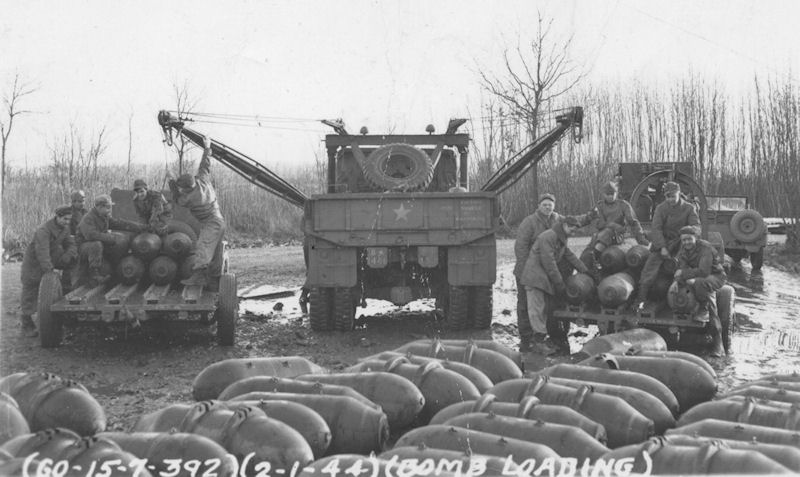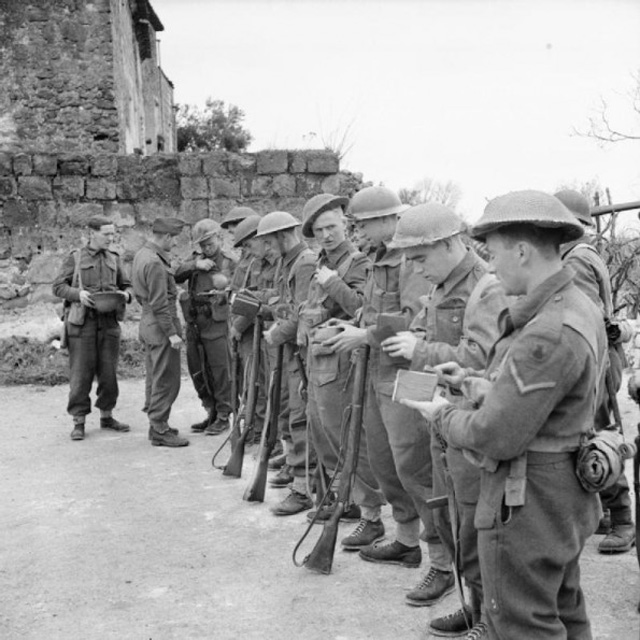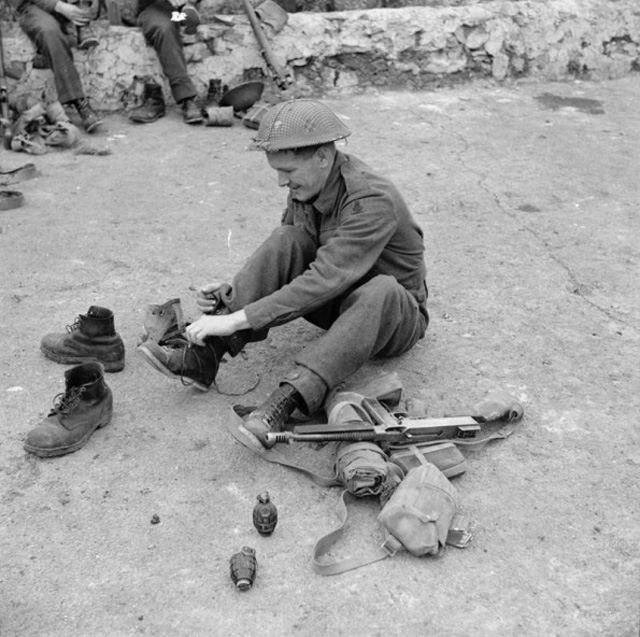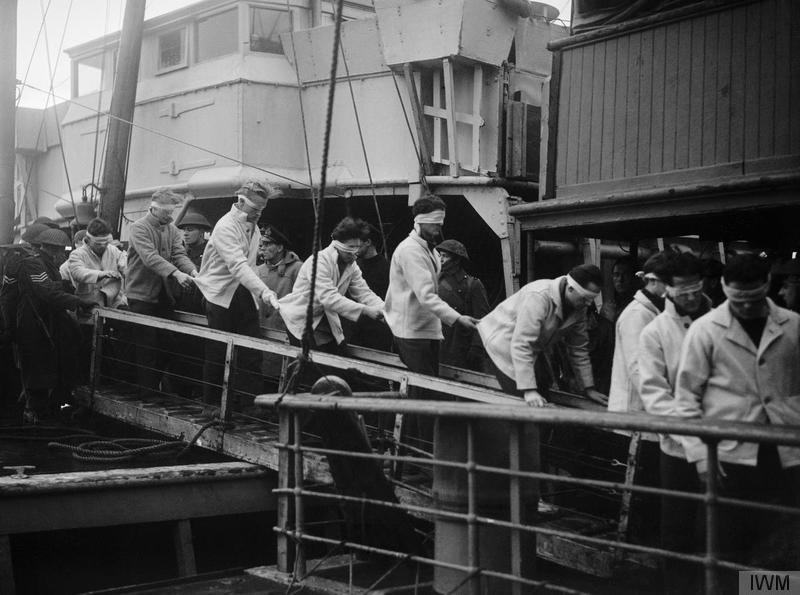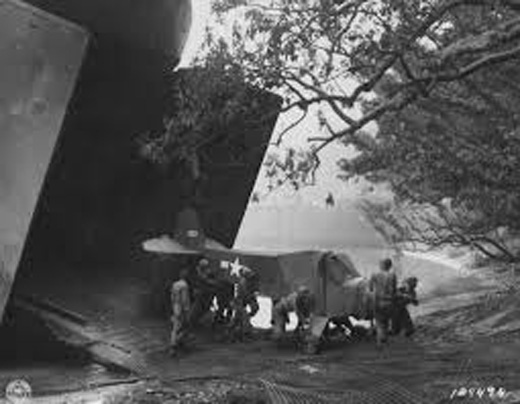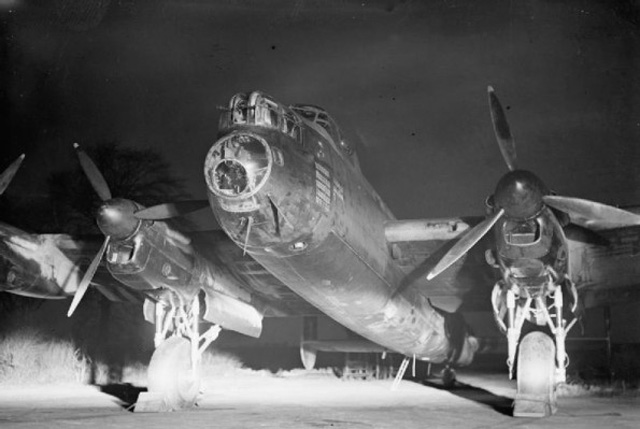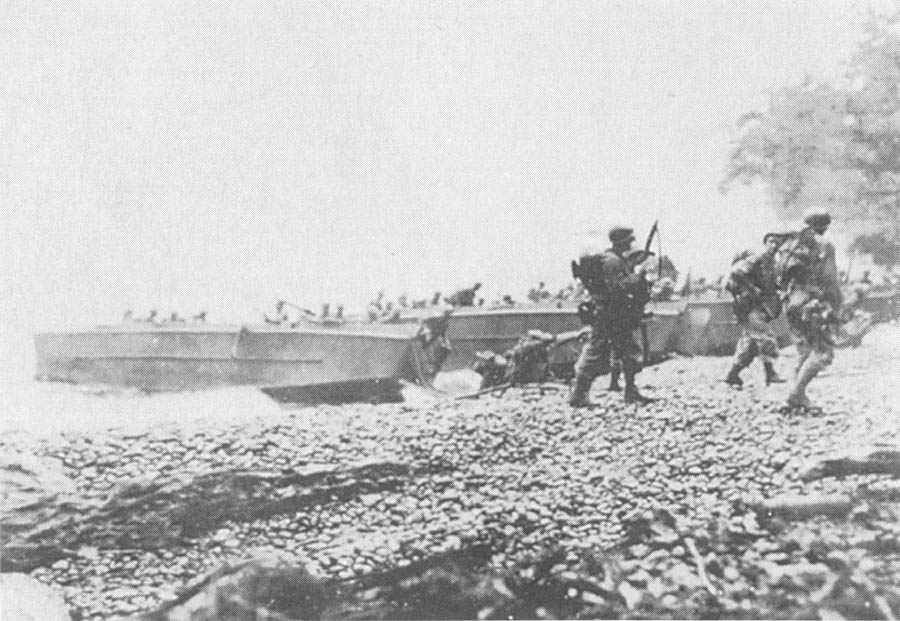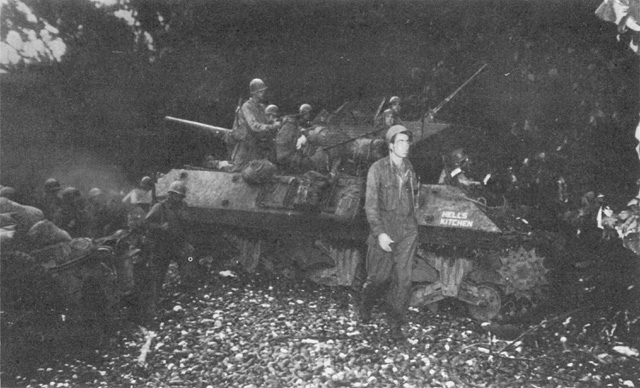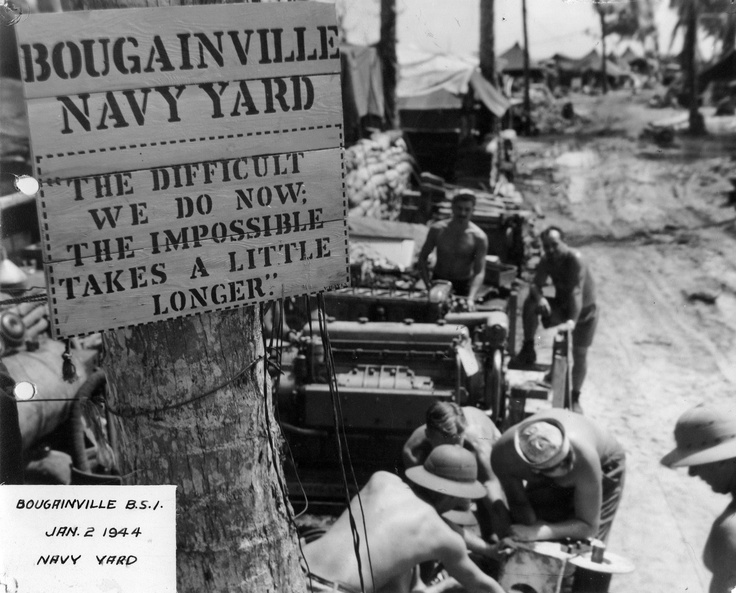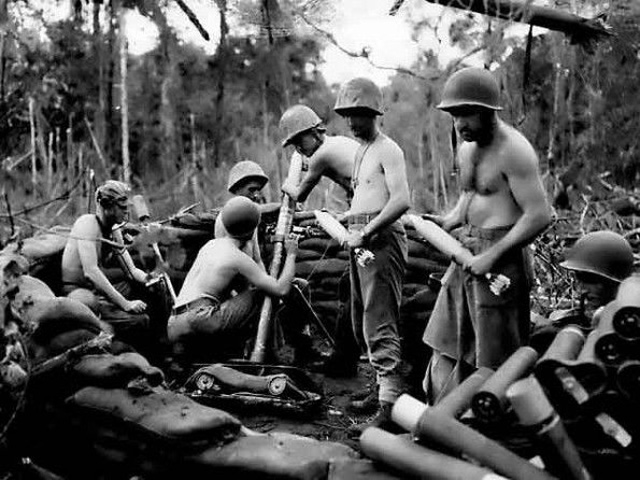Air Operations, Bismarcks
- During a fighter sweep against Rabaul-area targets, VF-33 F6Fs down 6 A6M Zeros over Rabaul at 1130 hours. VMF-211, VMF-214, and VMF-321 F4Us down 8 Zeros between 1150 and 1210 hours. 1 F6F is lost.
- V Fighter Command P-40s attack barges, dumps, and antiaircraft batteries at Cape Hoskins.
- During the night, 39 RAAF Beauforts based at Kiriwina attack airfields at Rabaul.
Air Operations, CBI
BURMA- 27 341st Medium Bomb Group B-25s and 16 10th Air Force P-39s attack oilfields and a refinery at Yenangyaung. 13 7th Heavy Bomb Group B-24s attack the Yenangyaung refinery and a power station. 4 B-24s attack Akyab. 30 311th Fighter Group A-36s and 15 P-51s attack a bridge and the town area at Loilaw. 8 14th Air Force P-40 fighter-bombers attack a Japanese Army headquarters and barracks at Hopong.
Air Operations, East Indies
380th Heavy Bomb Group B-24s attack Amboina Island and Pombelaa, Celebes.
[Air Operations, Europe
RAF BOMBER COMMANDBattle of Berlin
Evening Ops:
- The RAF sends 383 planes to attack Berlin. These include 362 Lancaster, 12 Mosquitoes and 9 Halifaxes. A total of 60 planes abort.
- German fighter controllers follow the bombers all the way to the target. Night fighters are sent to a radio beacon between Hannover and Bremen but these fighters miss the bomber stream and do not come into action until they are directed to Berlin. Most of the bomber casualties occur in the Berlin area. The time over the target is 2:48-2:56. About 1,066 tons of bombs are dropped which include 624 tons of high explosives and 442 tons of incendiaries. The planned route is one that is straight-in and straight-out to allow the bombers to fly into Berlin from the northwest to take advantage of a strong following wind from that direction. The bombers take off about midnight. Some of the German airfields are closed because of bad weather, but the Germans mount a large effort anyway. Between 150 and 200 nightfighers are in the air waiting the bomber stream. German controllers, however, get the timing wrong and the bombers fly past without the German fighters being released. The Pathfinders have difficulty concentrating their markings. The main force is depleted and arrives later than planned because of the weather. About 70 bombers drop their loads at various places in Berlin
central, eastern and southeastern districts. Most of the bombers miss Berlin altogether. 87 people are killed in the raid. Bad weather in England on the return causes many planes to be diverted to other airfields, but ther are no crashes.
- 26 Lancasters are lost on the raid. The casualties include 10 Pathfinder aircraft; No 156 Squadron, from Warboys, loses 5 of its 14 aircraft taking part in the raid. The aircrew casualties include 168 killed and 31 POWs.
- 8 Mosquitos are sent to Duisburg, 3 to Bristillerie, 2 Beaufighters are on Serrate patrols, 26 aircraft lay mines in the Frisians and off French ports and there are 25 OTU sorties.
- There are no losses.
ITALY:
- XII Bomber Command B-26s attack a marshalling yard and two bridges.
- XII Bomber Command B-25s attack a barracks, an iron works, and a marshalling yard.
- XIi Air Support Command A-36s attack the marshalling yards and harbor at Civitavecchia, a marshalling yard, gun emplacements, and targets of opportunity.
- XII Air Support Command P-40s attack various tactical targets, including a German Army road column mired in the snow in the Avezzano-Popili area.
ITALY:
- P-47s of the 15th Air Force's 325th Fighter Group conduct an uneventful sweep over Rome.
Air Operations, Marshalls
VII Bomber Command B-24s passing through Hawkins Field on Betio attack the Maloelap Atoll. 9 41st Medium Bomb Group B-25s attack the Jaluit Atoll. 9 VII Fighter Command P-39s attack shipping at the Mille Atoll. 3 B-24s are downed by antiaircraft fire over Maloelap, which results in the termination of daytime heavy-bomber attacks against this target.
[Air Operations, New Guinea
- Despite continuing bad weather which caused an earlier attack to be aborted, 40 V Bomber Command B-24s attack inland targets with nearly 100 tons of bombs, and 40 A-20s directly support the landing force with 36 tons of bombs dropped from extremely low levels. V Bomber Command B-25s and B-26s attack the airfield at Madang Airdrome to thwart Japanese efforts to attack the Saidor invasion force.
- P-40s with the 49th Fighter Groupís 7th Fighter Squadron down 2 of 9 Ki-49 'Helen' bombers and 3 of an estimated 20 fighter escorts near Saidor at 1610 hours.
- The airfield and harbor at Saidor are quickly overrun. Also, Australian Army ground troops driving along the coast occupy Sialum.
- During the night, Japanese nuisance bombers attack the Saidor invasion force.
Air Operations, Pacific
The first of 14 Allied bombing raids on airfields and shipping at Rabaul during the month takes place.
[Air Operations, Solomons
24 XIII Bomber Command B-24s attack supply dumps at Buka.
[CBI
INDIAMaj-Gen Daniel L. Sultan arrives to serve as Gen Stilwell's deputy and handle most of the administrative matters that Stilwell had previously handled alone.
[Eastern Front
The Russian Southern Fronts continue with their attacks, driving back the German troops in the area northwest of Kiev. The Soviets caputer Radovel, west of Korosten, just 18 miles from the 1939 Polish border.
[France, Politics
Gen Jean de Lattre de Tassigny is appointed commander-in-chief of Free French forces in North Africa.
[Indian Ocean
The US freighter Albert Gallatin (7176t) is torpedoed and sunk by Japanese submarine I-26 about 60 miles off the Arabian coast. There are no casualties and survivors are rescued by the Norwegian tanker Britannia.
[Italy
Gen Alexander, commanding the XV Army Group in Italy, decides that Operation SHINGLE, the combined operation on the coast of the Tyrrhenian Sea near Anzio, should take place between January 20 and 31. Some days before the operation the 5th Army is to launch a strong attack against Cassino and Frosinone to keep as many as possible of the German forces occupied.
[New Britain
<Brig-Gen Lemuel C. Shepherd, the assistant division commander, leads an advance of the 2/7, 3/7, and 3/5 Marines toward Borgan Bay. As the 3/7 and 3/5 Marines advance to the southeast, the 2/7 Marines are to fall back as the reserve. Jungle movement becomes treacherous and slow. After marines hack their way about 300 yards, Japanese defenders along Suicide Creek stop the advance of the 3rd Battalion, 7th Marines, and 3rd Battalion, 5th Marines. The creek's 12-foot-high banks are covered by interlocking fields of fire from cleverly hidden machine gun positions, making an attack suicidal--thus the name given to the creek by the Marines.
[New Guinea
Adm Daniel E. Barbey's Task Force 38 lands 2,400 men of Gen Clarence A. Martin's 126th Regt of the 32nd Div at Saidor to begin Operation DEXTERITY. The airfield and the harbor are quickly captured. There is little direct air support because of bad weather but other targets are attacked to prevent the dispatch of reinforcements. Adm Victor Crutchley leads an Allied cruiser and destroyer force as further cover. The invasion is roughly at the midway point between the Allied advances on New Guinea from the west and the east, and severs Japanese rearguard forces from their main base 55 miles farther up the coastline at Madang. Troops of the Japanese 20th and 51st Divisions, however, do escape entrapment. About 20,000 Japanese soldiers are now forded into the jungle-covered interior of the Huon Peninsula. To the east the Australians advance along the north coast of the Huon peninsula from Finschhafen and reach the village of Sialum.
[Pacific
The US submarine Finback (SS-230) sinks the Japanese merchant tanker Isshin Maru (10,000t) in the East China Sea about 30 miles northwest of Takara Jima, Nansei Shoto.
[Images from January 2, 1944
|
|
|
|
|
|
|
|
|
|
Depth Charges Explode |
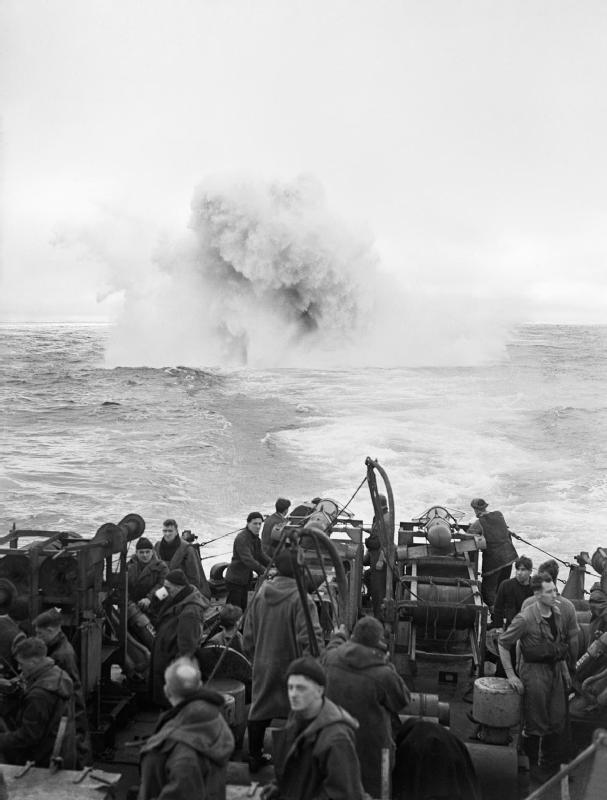 |
